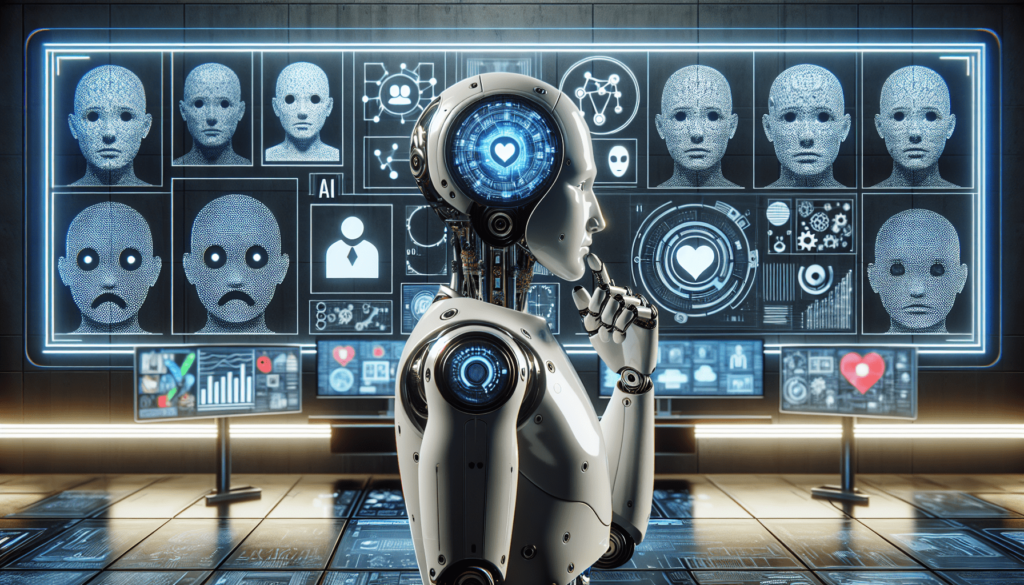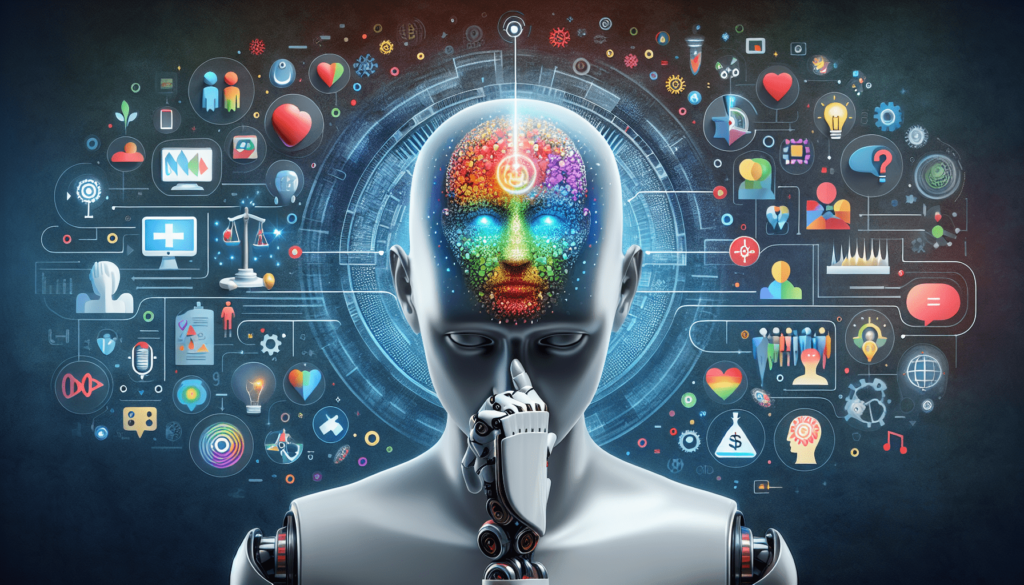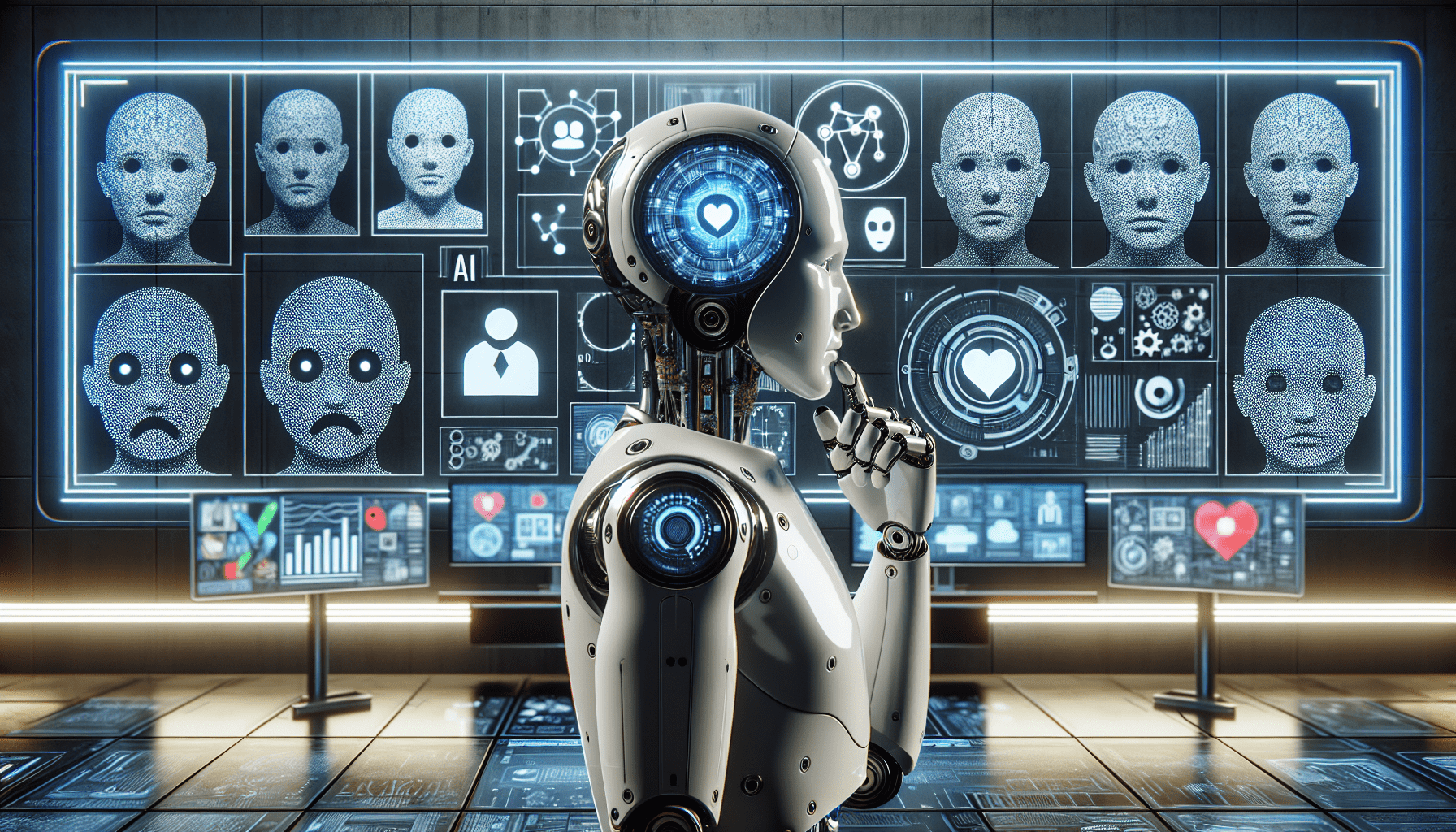In an age where technology continues to advance and integrate into our daily lives, there remains an intriguing question: Can AI truly understand human emotions? With the rapid progress of artificial intelligence, the prospect of machines comprehending and empathizing with our complex range of feelings seems tantalizingly close. This article explores the current state of AI’s emotional understanding, shedding light on the potential implications and limitations that arise in this fascinating field.

Understanding Emotions
Definition of Emotions
Emotions can be described as complex and multifaceted psychological and physiological experiences that influence how we perceive and respond to the world around us. They encompass a wide range of feelings, such as happiness, sadness, anger, fear, and surprise, and play a crucial role in our daily lives. Emotions are not only subjective experiences but also involve behavioral, cognitive, and physiological responses.
Importance of Understanding Emotions
Understanding emotions is essential for building meaningful relationships, effective communication, and overall well-being. Emotions guide our decision-making processes and help us navigate social interactions. By recognizing and interpreting the emotions of others, we can respond empathetically and appropriately, fostering positive connections. Furthermore, emotional intelligence is crucial for mental health, as it enables individuals to regulate their own emotions and cope with stress effectively.
Challenges in Understanding Emotions
Despite the significance of emotions, fully comprehending and interpreting them can be challenging. Emotions are subjective and can vary greatly from person to person, making it difficult to develop universal rules for understanding them. Additionally, emotions are influenced by various factors, including cultural backgrounds, individual experiences, and social contexts, further complicating the process. These complexities pose challenges for both humans and artificial intelligence (AI) when attempting to understand emotions accurately.
AI and Emotion Recognition
Overview of AI
Artificial intelligence is a branch of computer science that aims to develop intelligent machines capable of simulating human behavior and cognitive processes. AI systems can acquire and analyze large amounts of data, learn from it, and make decisions or predictions based on patterns and algorithms. This technology has seen significant advancements in recent years, leading to breakthroughs in various fields, including emotion recognition.
Emotion Recognition Technologies
Emotion recognition technologies utilize AI algorithms and techniques to interpret and understand human emotions. These technologies can analyze various types of data, including facial expressions, speech patterns, physiological signals, and natural language processing, to gain insights into someone’s emotional state. By combining multiple modalities, AI systems can provide a more comprehensive understanding of emotions, generating more accurate results.
Facial Expression Analysis
Facial expression analysis is a common method used in emotion recognition. AI systems can detect and analyze facial expressions through computer vision algorithms, identifying features such as raised eyebrows, wrinkled forehead, or smiling lips. These facial cues are then mapped to specific emotions, allowing AI systems to recognize and interpret a person’s emotional state accurately.
Speech and Voice Recognition
Speech and voice recognition technologies enable AI systems to analyze the tone, pitch, and other vocal characteristics to infer emotional states. By analyzing spoken words, intonation patterns, and vocal modulations, AI systems can identify emotions such as anger, joy, or sadness. These technologies have applications in fields such as call centers, virtual assistants, and voice-controlled devices.
Physiological Signals Analysis
Physiological signals analysis involves measuring and interpreting the body’s physiological responses to gain insights into emotional states. Through biosensors and other devices, AI systems can analyze physiological signals such as heart rate, skin conductance, and brain activity patterns. By correlating these signals with known emotional responses, AI can predict or recognize emotions accurately.
Natural Language Processing
Natural language processing allows AI systems to understand and interpret human language, including written text or speech. By analyzing the content, context, and sentiment of the language, AI can infer the underlying emotional state of the speaker or writer. Natural language processing plays a crucial role in applications such as sentiment analysis, social media monitoring, and customer feedback analysis.
Machine Learning and Deep Learning
Machine learning and deep learning techniques are fundamental components of AI emotion recognition. These techniques enable AI systems to learn from large datasets and improve their performance over time. By training AI models on labeled emotional data, they can develop the ability to recognize emotions accurately and generalize their understanding to new or unseen data. Machine learning and deep learning have been instrumental in advancing emotion recognition technologies.
Advancements in AI Emotion Recognition
Improvements in Facial Expression Recognition
Facial expression recognition has seen significant improvements thanks to advancements in computer vision and deep learning techniques. AI models can now detect and interpret subtle changes in facial expressions with high accuracy, allowing for more precise emotion recognition. These improvements have practical applications in fields like market research, user experience design, and human-computer interaction.
Enhancements in Speech and Voice Recognition
Speech and voice recognition technologies have undergone substantial advancements, making them more capable of accurately capturing and interpreting vocal cues related to emotions. AI systems can now recognize nuances in tone, pitch, and intonation, leading to improved emotion recognition accuracy. These enhancements have opened up possibilities for emotion-aware voice assistants, emotion-driven music recommendation systems, and emotion-based customer service applications.
Advances in Physiological Signals Analysis
The field of physiological signals analysis has progressed significantly, leading to more accurate emotion recognition. With advancements in biosensors and wearable devices, AI systems can capture and analyze physiological data in real-time. This real-time analysis allows for more immediate and contextually relevant emotion recognition, benefiting applications such as mental health monitoring, emotion-based virtual reality experiences, and sports performance analysis.
Progress in Natural Language Processing
Natural language processing techniques continue to advance, enabling AI systems to extract and understand emotional information from text and speech. Sentiment analysis algorithms can now detect emotions in written text, social media posts, and customer reviews with increasing accuracy. This progress has implications for applications such as recommendation systems, personalized advertising, and online reputation management.
Applications of AI Understanding Emotions
Emotion Analysis in Customer Service
AI’s ability to understand emotions has promising applications in customer service. Emotion recognition technologies can help identify customer sentiments, enabling businesses to offer personalized and empathetic responses. By analyzing vocal cues, facial expressions, or written language, AI systems can provide real-time insights into customer emotions, facilitating more effective problem resolution and customer satisfaction.
Personalized Advertising and Marketing
Understanding consumer emotions is crucial for creating impactful advertising and marketing campaigns. By employing AI emotion recognition, companies can gain insights into consumers’ emotional responses to advertisements, product packaging, or website interactions. This information can be used to tailor marketing strategies, improving their relevance and appeal to different customer segments.
Mental Health Diagnosis and Therapy
AI emotion recognition has the potential to revolutionize mental health diagnosis and therapy. By analyzing a person’s facial expressions, speech patterns, or physiological signals, AI systems can assist in the early detection of mental health disorders, such as depression or anxiety. Additionally, AI-powered virtual therapists or chatbots can provide support and therapy sessions, offering personalized interventions based on the individual’s emotional state.
Human-Robot Interaction
In the field of human-robot interaction, AI emotion recognition has transformative potential. By equipping robots with the ability to understand and respond to human emotions, they can engage in more empathetic and contextually appropriate interactions. This can enhance user experiences, facilitate more effective collaboration between humans and robots, and find applications in fields such as healthcare, education, and eldercare.
Automated Emotion-based Systems
AI emotion recognition can be leveraged to develop automated systems that respond based on recognized emotions. For example, smart homes can detect when occupants are stressed and adjust the environment to promote relaxation. In the education sector, AI systems can adapt teaching strategies based on student engagement levels. These emotion-based systems have the potential to enhance various aspects of our lives, from productivity to well-being.

Ethical Considerations
Privacy Concerns
As AI systems become more proficient in understanding human emotions, concerns about privacy and data protection arise. Emotion recognition technologies often require significant amounts of personal data, including facial images, voice recordings, or physiological data. Safeguarding this data and ensuring individuals’ privacy is crucial to avoid potential misuse or unauthorized access.
Bias and Discrimination
AI emotion recognition systems are prone to bias and discrimination, as they rely on datasets that may not represent the diversity of human emotions adequately. If the training data predominantly represents a certain demographic or cultural group, the AI system may exhibit biases in recognizing emotions from individuals outside of that group. It is essential to ensure that emotion recognition technologies are fair, inclusive, and do not perpetuate societal inequalities.
Responsibility and Accountability
As AI systems become more autonomous in understanding and responding to emotions, questions of responsibility and accountability emerge. If these systems make decisions or recommendations based on emotional cues, who becomes responsible for the outcome? Ensuring clear accountability frameworks and ethical guidelines is crucial to avoid potential harm and ensure proper use of AI emotion recognition technologies.
Manipulation and Emotional Exploitation
The power to understand and influence human emotions can be potentially exploited for manipulation purposes. AI systems that can accurately recognize emotions might be used to manipulate individuals by tailoring information, advertisements, or recommendations to exploit their emotional vulnerabilities. Guarding against such manipulative practices and establishing transparent regulations is essential to protect individuals’ well-being.
Limitations and Challenges
Subjectivity and Context
Emotions are highly subjective, influenced by individual experiences, cultural backgrounds, and social contexts. Capturing and interpreting emotions accurately is challenging due to these subjective factors. An AI system may struggle to understand the nuances and subtleties of emotional experiences, requiring further refinements and contextual understanding.
Cultural Differences
Different cultures express and interpret emotions in diverse ways, making it challenging for AI systems to recognize and understand emotions accurately across cultures. Cultural biases in the training data or the algorithms themselves can lead to inaccurate emotion recognition or misinterpretation. Developing culturally sensitive emotion recognition systems is necessary to ensure cross-cultural accuracy and applicability.
Lack of Emotional Experience
AI systems do not possess personal emotional experiences or subjective consciousness, which can limit their understanding of emotions. While they can recognize and classify emotional expressions or responses, they lack an intrinsic understanding of what it feels like to experience those emotions. Bridging this gap between recognizing emotions and truly understanding them remains a significant challenge in AI.
Interpreting Mixed Emotions
Humans often experience mixed emotions, where different emotions coexist simultaneously. Interpreting and accurately recognizing these mixed emotions is challenging for AI systems. Multiple emotions can manifest in a person’s facial expressions, speech patterns, or physiological responses, making it difficult to assign a singular emotion category. Developing sophisticated models that can capture and interpret mixed emotions is an ongoing area of research.
Future Possibilities
Advancements in AI Technologies
As AI technologies continue to evolve, the capabilities of emotion recognition systems are likely to improve significantly. Improvements in computer vision, natural language processing, and machine learning will enable more accurate and contextually aware emotion recognition. These advancements will have widespread implications in fields such as healthcare, customer service, education, and human-computer interaction.
Building Emotional Intelligence
AI systems that not only recognize emotions but also possess emotional intelligence are an area of active research. By incorporating empathy, intention understanding, and adaptive emotional responses, these systems can engage in more human-like interactions. Developing AI with emotional intelligence paves the way for more effective human-robot collaboration and emotionally aware virtual assistants.
Human-Like Emotional Understanding
Advances in AI could lead to the development of systems that exhibit a deeper understanding of human emotions, mirroring the comprehensiveness and complexities of emotional experiences. By integrating multiple modalities and contextual cues, AI systems may be capable of understanding and responding to emotions with a level of sophistication resembling human emotional understanding.
Collaborative Interaction between Humans and AI
The future of AI emotion recognition lies in creating systems that complement human emotional capabilities rather than replacing them. Collaborative interaction between humans and AI can leverage the strengths of both, enhancing emotional understanding, decision-making, and problem-solving. Together, humans and AI can create a more empathetic and emotionally intelligent society.
Conclusion
AI’s ability to understand human emotions opens up new avenues for human-machine interaction, applications in various industries, and advances in mental health support. However, with these possibilities come important considerations regarding privacy, bias, responsibility, and the potential for emotional manipulation. Striking a balance between technological advancements and ethical implementation will be crucial to ensure that AI emotion recognition benefits society while safeguarding individual well-being. With ongoing research and advancements, AI’s future in understanding emotions holds promise for a more emotionally intelligent world.
